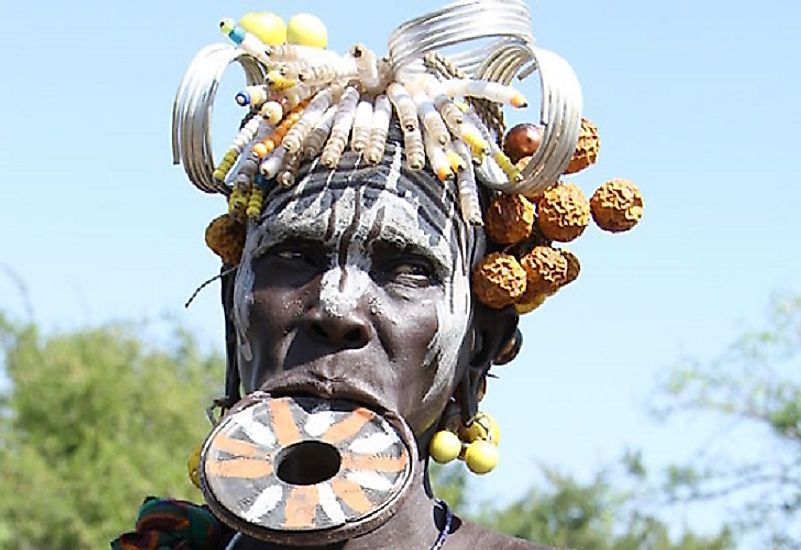The Mursi People, Ethiopia

5. Diaspora, Ethnology, and Related Peoples
The Mursi are an agro-pastoralist ethnic tribe living in southwestern Ethiopia, Africa. They inhabit the lower valley of the Omo River near the border of Ethiopia with South Sudan. Around 7,500 Mursi people live in the country according to the 2007 census in Ethiopia, with 92.25% of the population residing in the Southern Nations, Nationalities, and People's Region (SNNPR). The Mursi dwelling in the rural areas follows ancient tribal ways of life. The Mursi-inhabited lands are part of one of the most isolated areas in Ethiopia.
4. Mursi Ways Of Life
The Mursi lead a primitive way of life that is devoid of all the comforts of the modern world. Age is an important factor in the Mursi society and a determinant of political power in the society. Aged men are considered to be the wisest and those with good oratorical and debating skills are chosen as the leaders of their clan. Cattle ranching is the primary means of livelihood of the Mursi and the cattle wealth of a family represents the family’s status in the society. Mursi also cultivate crops near their settlements. Tradition and history are transmitted orally from one generation to the next. Mursi men undergo several stages of training and education throughout their childhood and youth to become responsible members of the tribe. Women are involved in house work and expected to play the role of a perfect wife and mother.
3. Language, Music, Cuisine, and the Arts
The Mursi language, a language that evolved from the Nilotic-Saharan language family, is spoken by the Mursi people. The language bears close resemblance to the other Nilotic-Saharan languages like the Kwegu and Suri. Second languages spoken by the Mursi include Amharic, Kafa, and Bench. Like other African tribes, Mursis have their own unique music and dance forms. The meat and milk of livestock forms the most important part of the Mursi diet. The diet is also supplemented by the edible crops grown by them. The Mursi love to dress in elaborate manner, with heavy ornamentation, body paints, piercings and tattoos. The Mursi women are famous for the large pottery discs worn by them on their lower lip. Mursi men are famous for their ceremonial dueling. During such fights, teams of men from two local Mursi populations fight against each other using 2-meter-long wooden poles.
2. Religious Beliefs
The Mursi people have their own unique religious beliefs. They believe in the forces of nature and a supernatural power that is responsible for their well-being. They pray to the Tumwi, a supernatural power that resides in the sky and at times appears in the form of objects in the sky like birds and rainbows. The people have their own religious leader and office, the Kômoru. The Kômoru is believed to be the middleman between the people on land and the god in sky. The religious leaders of this community belong to the priestly families and the office of Kômoru is an inherited one. The priest is responsible to pray to the god on behalf of the people. He performs elaborate public rituals during times of natural disasters, crop failures and disease breakouts to appease the god in the sky and protect the people.
1. Land Disputes
With the establishment of the Omo National Park, the Mursi lost parts of their land area to the park. There were several disputes between the park authorities and the Mursi over ownership of parts of forest land that was previously used by the Mursi for cattle grazing. It is believed that in the future, with the ambitious plans of the government to develop extensive irrigation projects and dams in the lower valley of the Omo River, the Mursi might be forced to give up their agro-pastoralist lifestyle and settle down in areas designated to them. Thus, the future of the Mursi appear uncertain and only time will tell how they will cope with the developmental pressures in the areas inhabited by them.







